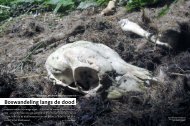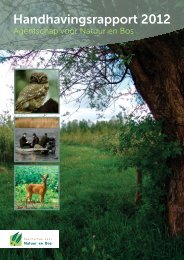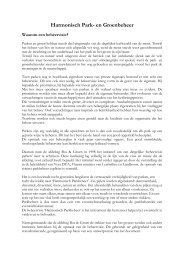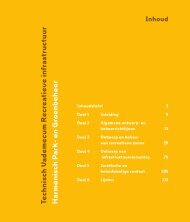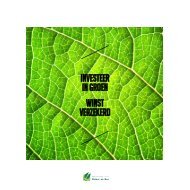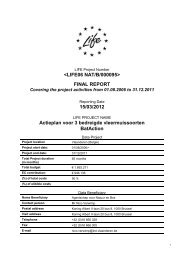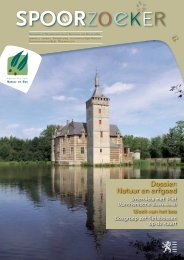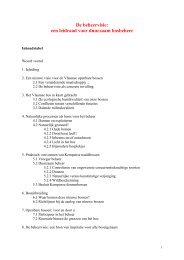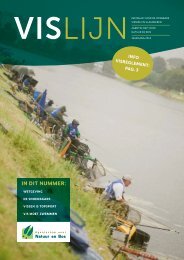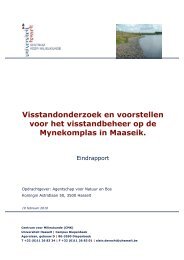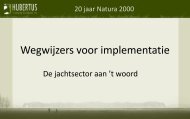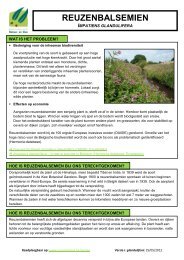LABOULBENIALES - Agentschap voor Natuur en Bos
LABOULBENIALES - Agentschap voor Natuur en Bos
LABOULBENIALES - Agentschap voor Natuur en Bos
Create successful ePaper yourself
Turn your PDF publications into a flip-book with our unique Google optimized e-Paper software.
1. INTRODUCTION1.1. FORENSIC ENTOMOLOGYFor<strong>en</strong>sic sci<strong>en</strong>ce is a multidisciplinary field, comprising differ<strong>en</strong>t kinds ofapproaches (MILDENHALL et al., 2006). One field of for<strong>en</strong>sic sci<strong>en</strong>ce is that offor<strong>en</strong>sic <strong>en</strong>tomology, combining the study of insects and other arthropods withthe criminal investigation. Wh<strong>en</strong> for<strong>en</strong>sic <strong>en</strong>tomology is involved, the insectsbecome part of the evid<strong>en</strong>ce.The major use of for<strong>en</strong>sic <strong>en</strong>tomology is to estimate the time of death or thepost mortem interval (PMI) of a corpse, based on the insects invading thedead body. Both the time it has tak<strong>en</strong> for the insects to reach the body forlaying eggs and the rate of developm<strong>en</strong>t need to be considered wh<strong>en</strong>estimating a (minimum) PMI.Species id<strong>en</strong>tification is the most crucial elem<strong>en</strong>t in for<strong>en</strong>sic <strong>en</strong>tomology.Species that appear almost the same to the naked eye may have differ<strong>en</strong>tgrowth rates, behaviours and habitat prefer<strong>en</strong>ces. Members of the ordersDiptera and Coleoptera are vital in for<strong>en</strong>sic <strong>en</strong>tomology (cfr. Table XII).Major fly familiesCalliphoridaeSarcophagidaeMuscidaePiophilidaeScathophagidaeSepsidaeSphaeroceridaeStratiomyidaePhoridaePsychodidaeTable XII: Important fly and beetle families for for<strong>en</strong>sic <strong>en</strong>tomology.Major beetle families(order Diptera)(order Coleoptera)SilphidaeDermestidaeStaphylinidaeHisteridaeCleridaeTrogidaeScarabaeidaeNitidulidae1.2. ANIMAL CADAVERS1.2.1. SOURCES OF BIODI VERSI TYAn animal consists for the greater part of carbohydrates, lipids and proteins.Wh<strong>en</strong> it dies, these high quality nutri<strong>en</strong>ts become available for otherorganisms. The cadaver offers a temporary living for many invertebrates.Animal cadavers repres<strong>en</strong>t the most important source of biodiversity (pers.comm. DIRK RAES, 2010). MELIS et al. (2004) suggest to leave cadavers in foreststo better stimulate a natural <strong>en</strong>vironm<strong>en</strong>t, since they have a significantecological impact.1.2.2. THE „ROTTING‟ OF A CADA VER (SC H I L T H UI Z E N & V A L L E N D U U K, 1998)The cadaver of an animal undergoes quick and considerable changes. This„rotting‟ takes place in a few stages:P a g e | 46



